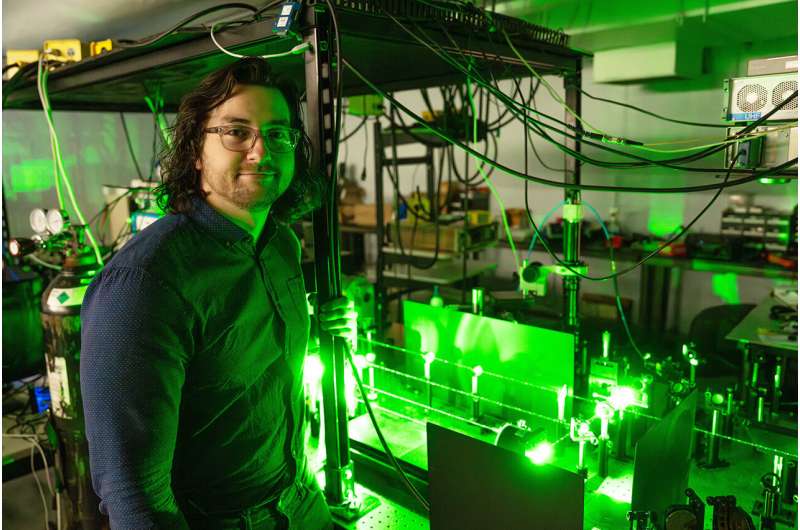
April 14, 2025 by University of Virginia
Collected at: https://phys.org/news/2025-04-cooler-faster-crystal-enable-ultrafast.html
Imagine if phones never got hot no matter how many apps were running. Picture a future where supercomputers use less energy, electric cars charge faster, and life-saving medical devices stay cooler and last longer.
In a study published in Nature Materials, a team of engineers at the University of Virginia and their collaborators revealed a radical new way to move heat, faster than ever before. Using a special kind of crystal called hexagonal boron nitride (hBN), they found a way to move heat like a beam of light, sidestepping the usual bottlenecks that make electronics overheat.
“We’re rethinking how we handle heat,” said Patrick Hopkins, professor of mechanical and aerospace engineering and Whitney Stone Professor of Engineering at UVA. “Instead of letting it slowly trickle away, we’re directing it.”
The overheating problem and a new solution
Every piece of modern technology, from smartphones to data centers, fights the same battle: heat buildup. Devices generate heat as they work, and if they can’t cool down fast enough, they slow down, lose efficiency or even break. Right now, cooling systems rely on metal heat sinks, fans and liquid cooling, but these methods take up space and use extra power.
This new research offers a game-changing alternative. Instead of relying on slow-moving heat vibrations called phonons, the team used hyperbolic phonon-polaritons (HPhPs)—special waves that can carry heat at extraordinary speeds.

How it works
Typically, heat in electronics spreads like ripples in a pond—dissipating outward but losing energy along the way. In contrast, the team’s method transforms heat into tightly channeled waves that travel efficiently across long distances, more like a high-speed train racing along a track.
The researchers achieved this by heating a tiny gold pad sitting on hBN. Instead of heat just spreading sluggishly, it excited the hBN’s unique properties, turning the energy into fast-moving polaritonic waves that instantly carried the heat away across and away from the interface between the gold and hBN.
“This method is incredibly fast,” said Will Hutchins, first author of the study and a mechanical and aerospace engineering Ph.D. candidate at UVA. “We’re seeing heat move in ways that weren’t thought possible in solid materials. It’s a completely new way to control temperature at the nanoscale.”
This discovery could revolutionize cooling in high-performance electronics, allowing faster, more powerful devices that don’t overheat.
While the process is still new, its impact could be massive:
- Faster more efficient smartphones and laptops—Devices that don’t overheat could run faster without draining battery life.
- Better electric cars—Batteries that stay cool charge faster and last longer.
- More powerful AI and data centers—Cloud computing and AI tools could work harder while using less energy.
- Advanced medical technology—More precise longer-lasting implants and imaging devices.
“This discovery could change how we design everything from processors to spacecrafts,” Hopkins said.
The days of hot, slow, power-hungry devices may be numbered. With this new breakthrough, the future of technology just got a whole lot cooler.
More information: William Hutchins et al, Ultrafast evanescent heat transfer across solid interfaces via hyperbolic phonon–polariton modes in hexagonal boron nitride, Nature Materials (2025). DOI: 10.1038/s41563-025-02154-5
Journal information: Nature Materials

Leave a Reply